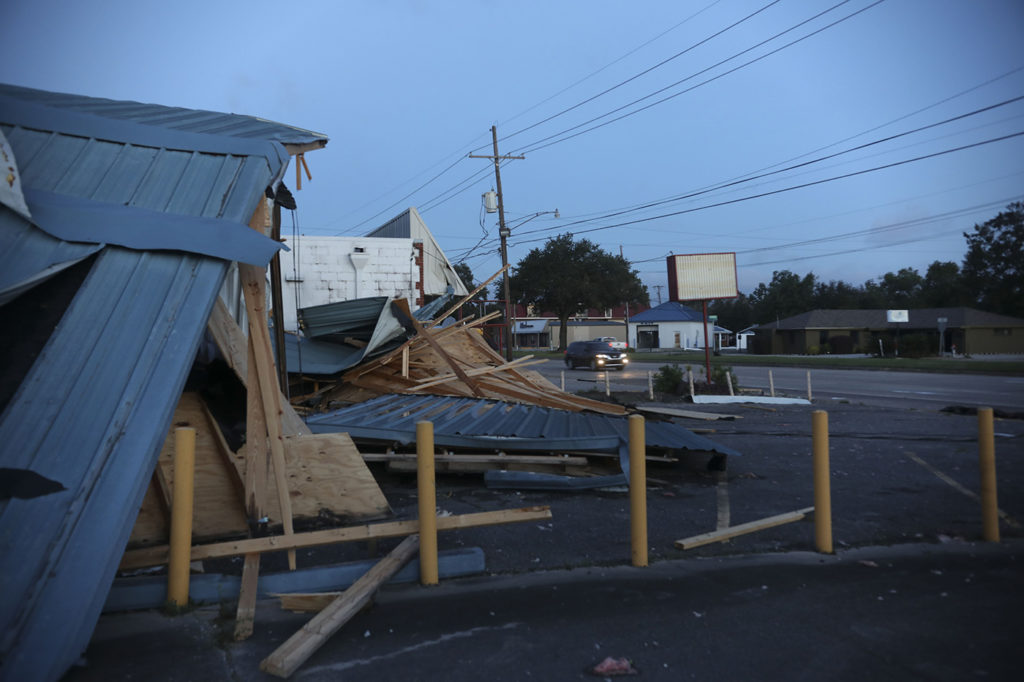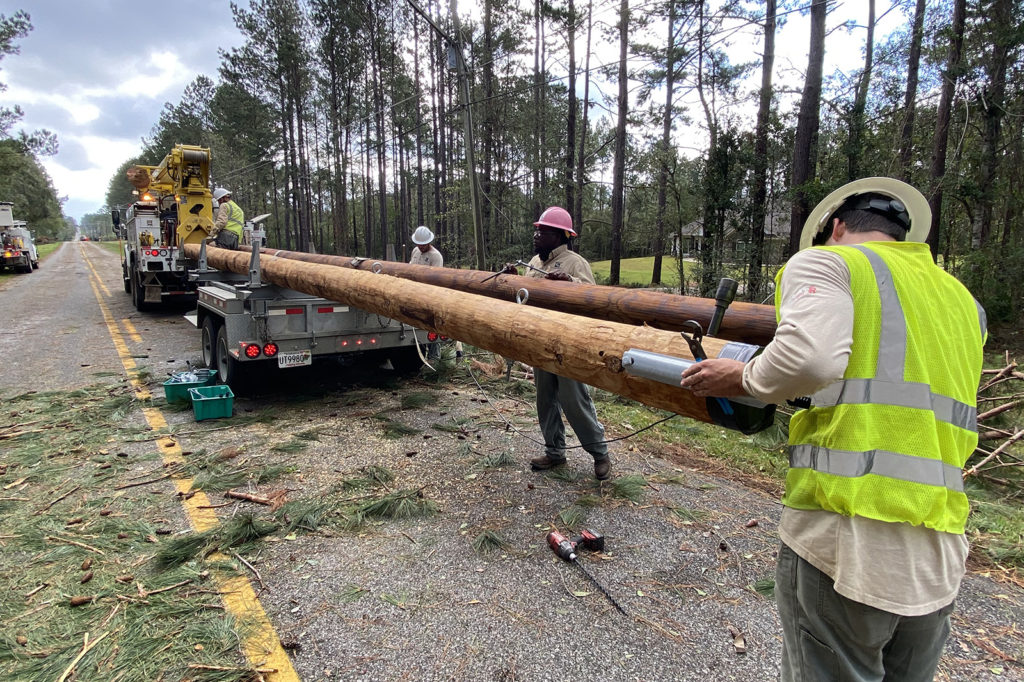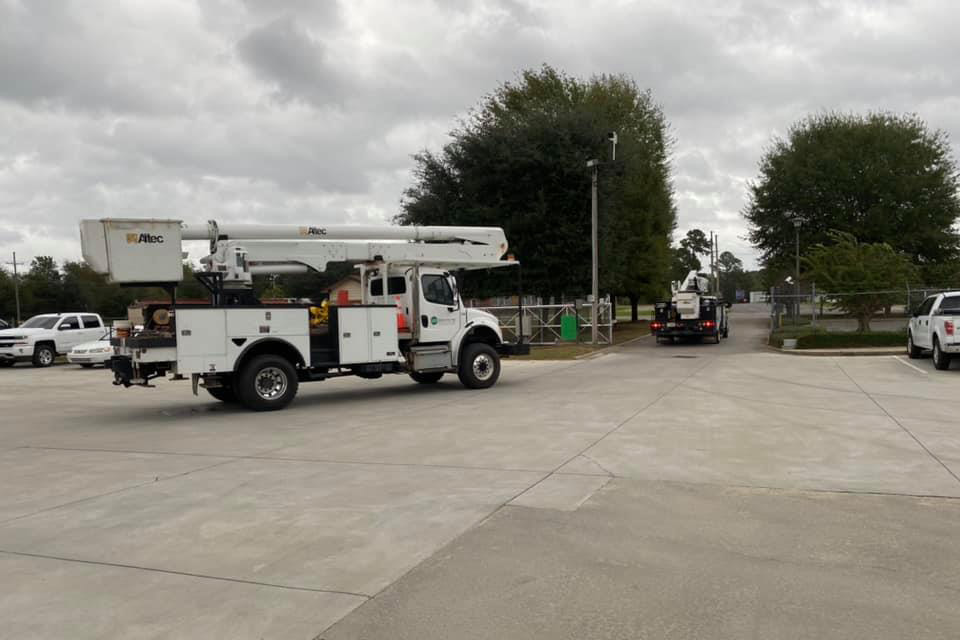
Updated: Nov. 2, 3:00 p.m. ET
Electric cooperatives from the Gulf Coast to the mid-Atlantic have made dramatic progress in restoring power after Hurricane Zeta battered the tempest-torn region, coming ashore Oct. 28 as the 27th named storm of the 2020 season.
Zeta made landfall near Cocodrie, Louisiana, outside New Orleans, as a Category 2 storm with 110 mph winds—1 mph shy of Category 3.
The storm’s powerful winds caused the most damage for Georgia co-ops, which reported more than 400,000 outages on Thursday. By Monday morning, co-ops had restored power to about 391,000 members and were working to address the remaining 9,000 outages, primarily in north and northeast Georgia.
“It took years to construct the electric transmission and distribution system in Georgia, but Tropical Storm Zeta destroyed much of it in under three hours,” said Terri Statham, manager of media relations at Georgia Electric Membership Corp.
“EMC crews, many working up to 18-hour shifts, are now working in some of the most hard-to-reach parts of their systems, removing hundreds of large trees from roadways and power lines, and replacing hundreds of broken poles and hundreds of miles of line on the ground.”
The power restoration effort has been “long and difficult,” Statham said.
“Crews are following a proven, methodical process for restoring power, but progress is moving slowly while rebuilding miles of power lines and replacing hundreds of power poles,” she said. “In addition, at this stage in the restoration process, each repair may provide service to a small pocket of customers—as few as 10 or 20, and sometimes just one or two members.”
Georgia crews were being helped by out-of-state lineworkers who rushed to the area from Florida, Kentucky and Tennessee.
Jackson Electric Membership Corp. in Jefferson initially reported more than 50,000 outages Thursday. The co-op had restored power to nearly everyone by Monday.
In Mississippi, outages at the three hardest-hit co-ops had dropped to about 24,000 as of late Sunday, down from a high of 140,000 on Thursday morning. Kiln-based Coast Electric Power Association reported 8,345 outages from a high of 63,500; Singing River EPA in Lucedale reported 15,548, down from 62,000; and Columbia-based Pearl River Valley EPA reported 262, down from a high of 14,679.
In Alabama, the number of outages dropped from about 130,000 on Thursday morning to about 33,000 on Sunday, according to the Alabama Rural Electric Association of Cooperatives.

Central Alabama Electric Cooperative in Prattville and Clark-Washington Electric Membership Corp. in Chatom reported the highest number of outages. On Sunday, Central Alabama EC was down to 8,500 members without power, down from a high of 37,000.
“The damage has been compared to that of Hurricane Ivan in 2004,” the statewide association wrote on Twitter.
On Friday, the Electric Cooperatives of Arkansas dispatched 60 lineworkers, with equipment, to Alabama and Mississippi to help restore power. The Arkansas co-ops had already sent crew members to Mississippi earlier in the week.
In South Carolina, the hardest-hit co-op, Pickens-based Blue Ridge Electric Co-op, had only about 45 outages remaining on Monday, down from a high of 50,000 on Thursday, according to The Electric Cooperatives of South Carolina. The total for all the state’s co-ops Monday was less than 70 outages.

In North Carolina, EnergyUnited in Statesville had the most widespread damage, reporting nearly 44,000 outages on Thursday. Power was restored to all members by Sunday night, the co-op said on Twitter.
In Louisiana, two co-ops that reported 18,200 members without power at the peak of the storm have restored service to their members.
Washington-St. Tammany Electric Cooperative reported 24% of its system, or more than 12,000 members, lost power Thursday. The co-op had restored power to nearly every member by Monday.
When the storm hit, approximately 6,209 members, or 37%, lost power at South Louisiana Electric Cooperative Association. However, the number of outages quickly plunged to about 500 later on Thursday and power was fully restored by Friday.
“What saved us was the storm was moving quickly,” said SLECA General Manager Joe Ticheli. “If it had been a slow-moving storm like Isaac back in 2012, our system would have been totally devastated.”
In Florida, Escambia River Electric Cooperative had more than 6,000 outages affecting 53% of its membership on Thursday. Co-op crews restored all power by Friday and sent crews Sunday to help Coast EPA in Mississippi.
“Once our linemen had a chance to rest from working around the clock restoring power to our members, they volunteered to go help fellow cooperatives hit by this devastating storm,” said CEO Ryan Campbell.
Victoria A. Rocha and Erin Kelly are staff writers at NRECA.